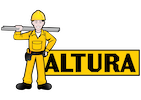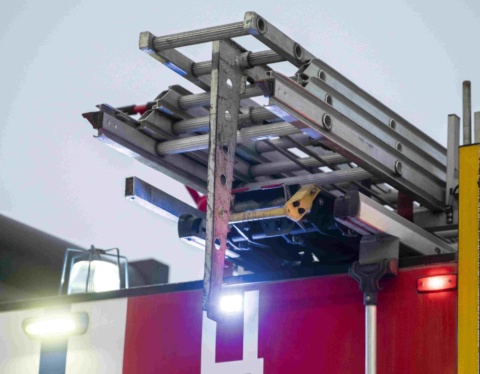Alternative options to wire ways and electrical cables that entirely enclose lines are cable tray systems.
Cable support systems are made of glass-encased polymeric fireproof resins and are designed and constructed with durable metals, usually aluminum and steel, to avoid corrosion, high electric conductivity, and weight issues.
For any smaller or larger project, Alturas cable tray supplier in Qatar produces GRP cable trays in a variety of sizes, as well as a variety of fittings such as bends, tees, cross, reducers, and so on. We have established ourselves as a leading GRP tray manufacturing firm in Qatar, thanks to its vast variety of covers and fittings. Our valued customers can also get cable duct fittings from us.
All types of wire can be supported by GRP cable trays, including:
- Control cables
- Telecommunication cables
- Fiber Optical Cables
- High Voltage Power Lines.
- Power Distribution Cables

Purpose:
Support solutions for electrical and telecommunications cables and wires include cable trays.
A cable tray shields and sustains both electricity and signal cables, making network upgrades, expansions, reconfigurations, and relocations easier.
The majority of cable tray arrangements are exposed, which allows for effective heat dispersion and quick maintenance and restoration. Some cable tray systems are ideal for underfloor use, despite the fact that they are normally strung from roofs or fastened to walls.
Kinds of Cable Trays:
The following are some of the most common cable tray designs.
- Ladder-type
- Perforated type
- Solid bottom type
- Wire mesh
- Channel type
Typically, an engineer or designer will select the sort of cable tray that best suits the business ’ needs. It is conditional on the scenario and the surrounding surroundings.
The number of cables in the tray, as well as their size, spacing, and weight, all influence the cable tray choices.
Ladder Cable Tray
Two lateral rails are joined by the bottom rung on the Ladder Cable tray. The ladder notches on this style of cable tray make for quick entry to the connections from either the bottom or top.
The notches of the ladder cable trays serve as suitable hooks for shackling cables in vertical or non-horizontal cable tray runs or even in horizontal cable tray passes in which cable positions should be preserved.
Perforated Cable Tray
Tray for cables with perforations has the bottom and side rails that are each ventilated. In comparison to the ladder-style, it provides more cable support.
Solid-bottom Cable Tray
Solid-bottom (non-ventilated) cable trays are preferable for fiber-optic cable systems where slumping of cables could impact system efficiency.
The primary reason for using solid bottom trays is to prevent radio-frequency interference/electromagnetic.
Cable Tray with Wire Mesh
Wire mesh cable tray, also known as basket cable tray, is a type of cable tray created by welding stainless steel wires together to form a basket-like mesh.
Cable trays are primarily used for supporting low voltage, telephone, and fiber optic cables over short distances.
A channel cable tray is simply a metal tray and can be utilized to attach very short cable runs.
Materials
1. Metallic Aluminum: Corrosion-resistant with a high strength-to-weight ratio. Because of its small weight, aluminum is the most widely utilized metal.
Steel: It is good for electric shielding and has a low thermal expansion and has excellent corrosion resistance and can endure extreme temperatures.
2. Non-Metall: Fiberglass is nonconductive, corrosion-resistant, and lightweight.
Precautions: The most important thing to remember is to keep the bend radius of the fiber-optic or coaxial wire within acceptable limits.
If the trays are not inspected and cleaned properly on a regular basis, flammable dust and clutter can build up.
Advantages:
- One of the major benefits of employing a cable tray is that it is much cheaper than other types of shielding wiring on the manufacturing floor.
- Cables are easily noticeable for routine maintenance, and replacing cables is simple because cables can enter or leave the tray at any position throughout the system.
- Regular housekeeping is essential for safety, as cable trays are frequently put in difficult-to-reach locations.
Our cable support structures are appropriate for situations where metal installations are susceptible to corrosion. We are a GRP Cable tray manufacturing company in Qatar and our cable trays are manufactured in a completely automated heavy-duty facility by Alturas. Fire retardant criteria are met by our cable trays.
There are 2 kinds of cable support networks available: ladder cable trays and perforated cable trays. Both are good alternatives to the corroded, heat-spreading, and eroding cable trays.




